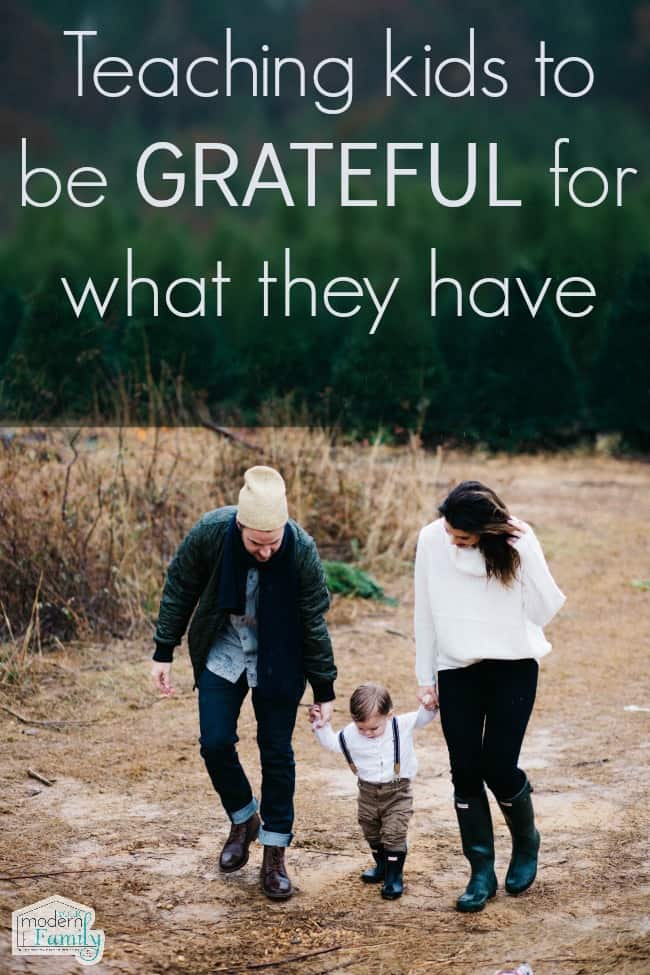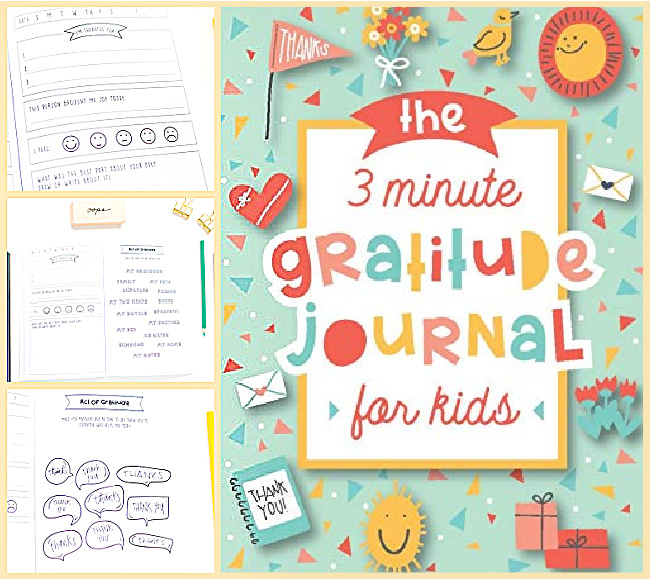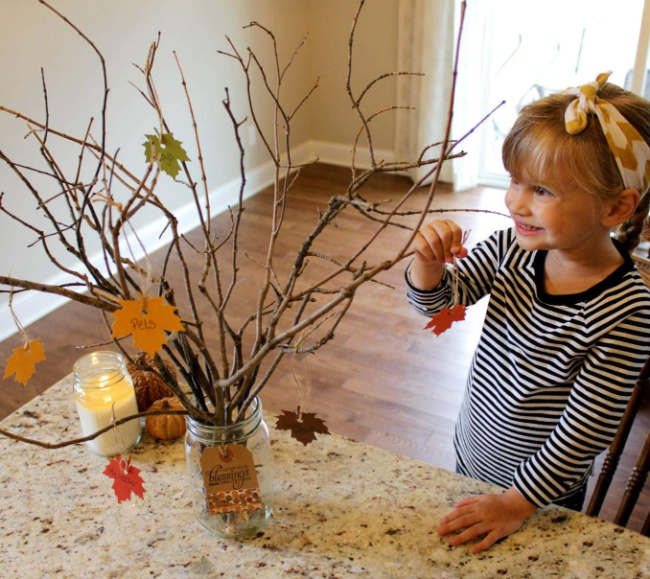This post may contain affiliate links. Please read our disclosure policy.
Teaching kids to be grateful is important. It is something that is always on my mind. It’s also one of the hardest parts of parenting – constantly trying to find ways to teach them to be grateful and kind. Remembering to be a great model of what gratitude looks and sounds like every day, in all sorts of different situations.
In a world where everything can quickly be at our fingertips, it can be hard to navigate the waters of gratefulness. I want our kids to be kind, caring, and grateful. I want them to be thankful for the things that they have.
Teaching gratitude and raising grateful children is possible, but it starts with us. It starts with our examples.

Update: Today’s post has been updated. It was originally written and shared several years ago.
Being Grateful Makes You Happy & Healthy
The University of California conducted a study of gratitude in the areas of human health, personal and relational well-being, and developmental science.
They found that “people who practice gratitude report fewer symptoms of illness, including depression, more optimism and happiness, stronger relationships, more generous behavior, and many other benefits.”
Ways to Teach Kids About Gratitude
The ideas shared below are easy to implement so you can start a few of them today! I’ve included Amazon affiliate links to some products that help you with your goal of teaching kids to be grateful.
(1) Focusing on giving thanks. Let your children see you when you tell your husband “thank you for filling up the van”. Let your children hear you when you tell your child’s teacher “Thank you for being a great teacher.” Let your children feel when you hug them when they have done something kind.
(2) Helping your children gain perspective is key to a grateful heart. Teach them to have an attitude of gratitude. Have them write in a gratitude journal or even tell you something that they are grateful for each day at the dinner table. This will instill a sense of gratitude as they look back on all of the things that they have written day after day.

(3) Tell them stories about times when you helped someone else. They will love to hear things these stories! Be a great example, even when they aren’t watching.
(4) Having grateful kids starts first with us. Kids learn to show gratitude when they see examples set by grateful parents.
(5) Start the tradition of a thankful tree. It’s the perfect way to teach your family to count their blessings while they are expressing gratitude in the form of a little leaf.

(6) LOOK at your child… really LOOK! Let your child know that you see them and hear them. Let them know when you are proud of them. People love words of affirmation.
(7) Start a family game night or family movie night where you all share something you are grateful for. Before you start, talk about why you love being in this family.
(8) Teach your family the truth about being satisfied. My friend, Kristen says it best. “ We were created for the eternal. This life isn’t the end. All our striving and obtaining and we all end up leaving this world with the same thing: nothing.
“We are eternal beings, created for eternity. So, the temporary things of this world–that feel good and are fun are temporary. They will not last. Kids also don’t have the perspective of hindsight. Everything here and now feels life forever. They need us to gently remind them that this world will never quench the hunger we were born with.”
(9) Teaching children to have good manners is a great start. You can model gratitude by saying something as simple as ‘please’ and ‘thank you’ and then teaching your kids to do the same. Simple and effective.
(10) Play a game of charades, but turn them into gratitude charades! “Each person takes turns drawing or acting out what they are most thankful for.”
(11) Create an annual Thanksgiving tablecloth. We do this at Thanksgiving, but tweak the idea to make it your own- maybe you create a “grateful” tablecloth every month, where you add one thing that happened that month that made your thankful or grateful.
(12) Try going without –>> “ When we cater to kids’ every whim, from packing their favorite hard-to-come-by treat in lunches to ensuring they always have the latest smartphone, kids feel entitled to the niceties of life.
To help kids feel grateful for what they have, try doing without. Figure out what your family can do without for a week or a month. Is it eating out? Turning on the TV? Air conditioning?
Cutting back on some conveniences may not seem comfortable at first, but it’s a great way to do a family appreciation check for what you do have, and foster empathy for those who do without.’
(13) Create a gratitude jar. Come up with a list of “acts of kindness” and write them on little pieces of paper. Put them into a jar and pick one out each day.
(15) Challenge your family to 24 days of random acts of kindness.
(16) Teach your kids to write thank-you notes and say thank you when they have received a gift. Yes, writing a lot of cards (for holiday or birthday gifts) may be hard for them to do, but so important.
What about you? How do you teach your kids about gratitude?













